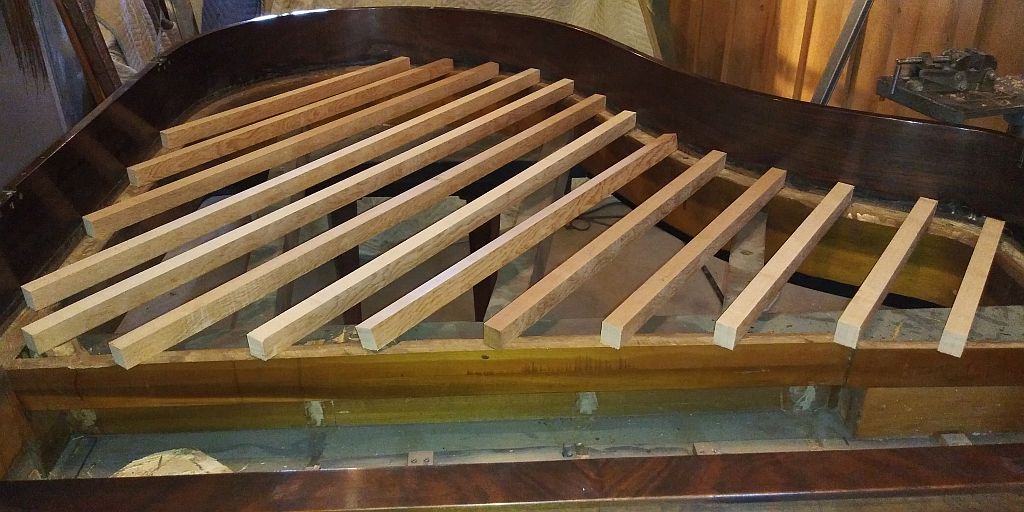A key factor in piano restoration is to leave no weak links. Often times, the piano soundboard is that weak link. If not replace when needed, the instrument will remain an old piano in need of restoration regardless of how much other work has been done. I am guilty of this myself with jobs I have done in the past. Given, I’ve been at it for over 40 years there is a good reason. A 100 year old piano today was a 60 year old piano in my early years. However, I have had to change my perspective. Nowadays I opt to replace boards in nearly all the pianos I rebuild. I some cases still though, a board will not need to be replaced.
What Necessitates Replacing a Piano Soundboard
Soundboards are made for solid wood. Generally a straight grain quarter-sawn spruce is used. Some of the finest woods have come from the British Northwest and Alaska, the Adirondack Mountains, and southern Germany. Like all wood, soundboards will natural fatigue. The wood will loose its moisture content and elasticity, resin becomes too hard, and glue joints fail. In addition, the built-in crown of the soundboard itself will collapse and fail, rendering the board no longer able to support the downward pressure of the string and its ability to vibrate correctly.
Pictured blow are some of the steps taken in my shop to manufacture and replace a new soundboard.








